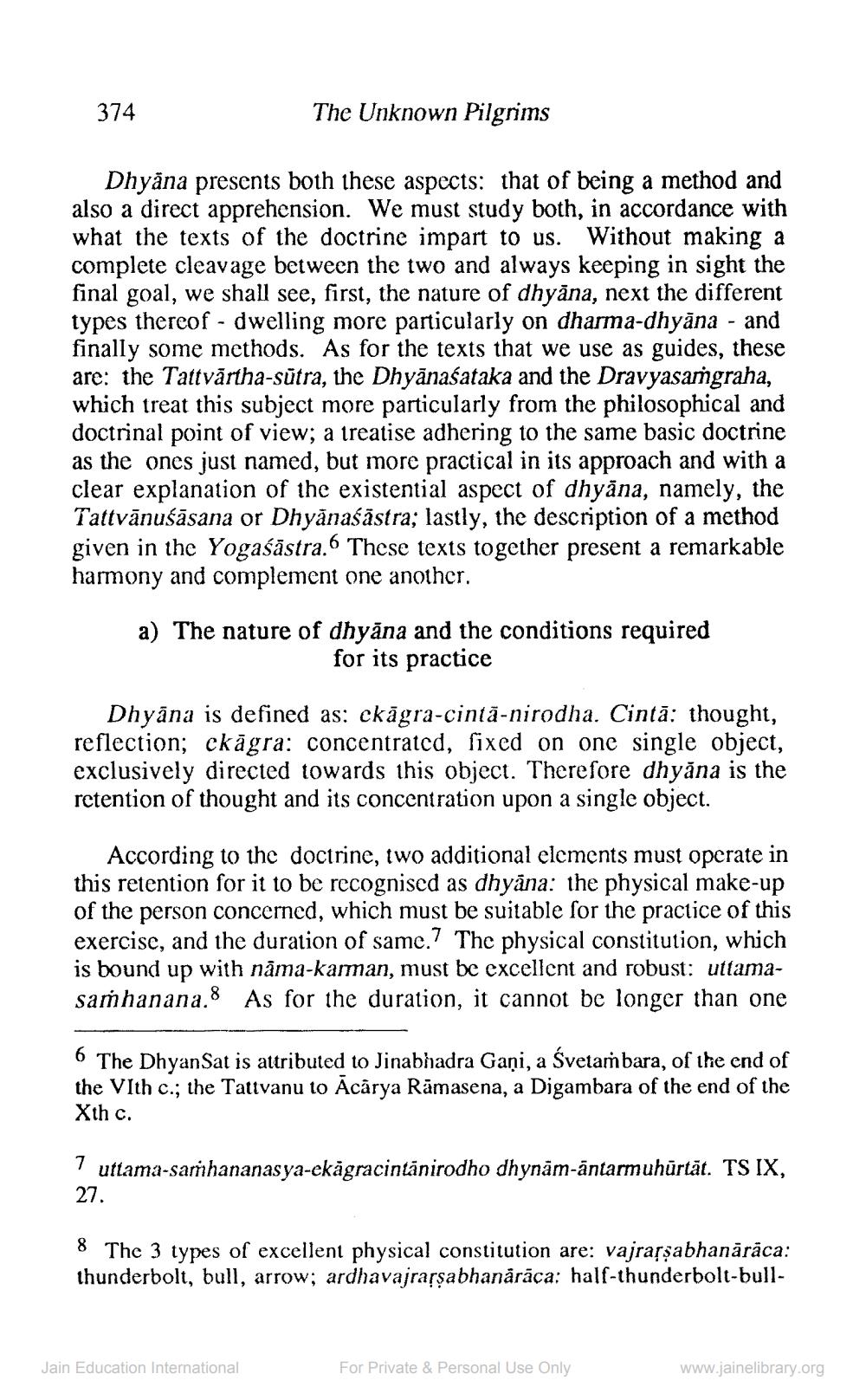________________
374
The Unknown Pilgrims
Dhyana presents both these aspects: that of being a method and also a direct apprehension. We must study both, in accordance with what the texts of the doctrine impart to us. Without making a complete cleavage between the two and always keeping in sight the final goal, we shall see, first, the nature of dhyāna, next the different types thereof - dwelling more particularly on dharma-dhyāna - and finally some methods. As for the texts that we use as guides, these are: the Tattvārtha-sútra, the Dhyānaśataka and the Dravyasamgraha, which treat this subject more particularly from the philosophical and doctrinal point of view; a treatise adhering to the same basic doctrine as the ones just named, but more practical in its approach and with a clear explanation of the existential aspect of dhyāna, namely, the Tattvānuśāsana or Dhyānaśāstra; lastly, the description of a method given in the Yogaśāstra. These texts together present a remarkable harmony and complement one another.
a) The nature of dhyāna and the conditions required
for its practice
Dhyāna is defined as: ckāgra-cintă-nirodha. Cintă: thought, reflection; ckāgra: concentrated, sixed on one single object, exclusively directed towards this object. Therefore dhyāna is the retention of thought and its concentration upon a single object.
According to the doctrine, two additional elements must operate in this retention for it to be recognised as dhyāna: the physical make-up of the person concerned, which must be suitable for the practice of this exercise, and the duration of same.7 The physical constitution, which is bound up with nama-karman, must be excellent and robust: uttamasaṁhanana.8 As for the duration, it cannot be longer than one
6 The DhyanSat is attributed to Jinabhadra Gaņi, a Svetambara, of the end of the VIth c.; the Tativanu to Acārya Rāmasena, a Digambara of the end of the Xth c.
7 uttama-samhananasya-ekågracintanirodho dhynām-antarmuhūrtăt. TS IX,
27.
8 The 3 types of excellent physical constitution are: vajrarsabhanārāca: thunderbolt, bull, arrow; ardhavajrarsabhanårāca: half-thunderbolt-bull
Jain Education International
For Private & Personal Use Only
www.jainelibrary.org




